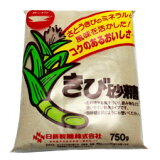When I came back to Japan from France after living for three years, I was so sad to think that I could no longer walk along the Seine, enjoying picture-like views. I had a lot of great memories in Paris, but there were things that made me feel relieved to be back. One of such things is public restrooms.
In Paris, filthy wet toilets were very common and I was often so reluctant to use them, whereas public restrooms in Japan are generally clean (of course there are exceptions) and I sometimes think I could even live in there.
Today's topic is how to flush toilets in public places such as restaurants, stations and department stores. As Japanese toilets are becoming more and more high-tech, you may feel confused, not knowing how to flush.
This is a very simple flush button. 流す (ながす、nagasu) means to flush. You only have to press it.
The photo below is a sensor-operation type. Place your palm over the sensor, and the toilet will flush.
Sometimes it is difficult to find a flush button, but don't panic. If you find a Washlet control panel installed on the wall, flush buttons must be somewhere on the panel, normally on its upper part. You can't see them from this angle, but...
Look! Can you see two “流す (to flush)” buttons? After peeing, press the right one marked with a Chinese character 小, which literally means "small" but in this case "urine". When you need more water to clean the toilet, press the left one. In this photo nothing is written on this button, but you can often find a different character 大 (lit. big) on it. I don't have to explain what it means, do I?
Automatic flush toilets are also becoming very common. When you leave the toilet, the toilet automatically flushes, but what should you do if you want to flush more than once? Look for a sensor panel like the one below, and press a manual operation button 手動ボタン(しゅどうボタン, shudo botan). In this photo it is the round white buttan with a red dot in the middle.
One more thing... it is safer NOT to touch anything red in the bathroom stall, whether a button or a cord. It is most probably an emergency button. Several years ago one of my former students (I'm a Japanese teacher) mistakenly pressed an emergency button at a railway station, trying to flush the toilet. Panicked, she ran away before station staff arrived to rescue her!
OK, here's today's useful expression: すみません、水が流れません。 Sumimasen, mizu ga nagaremasen. (=Excuse me, the toilet won't flush. )
I don't want to imagine the situation you have to use this phrase, though...











.JPG)




 I
I













